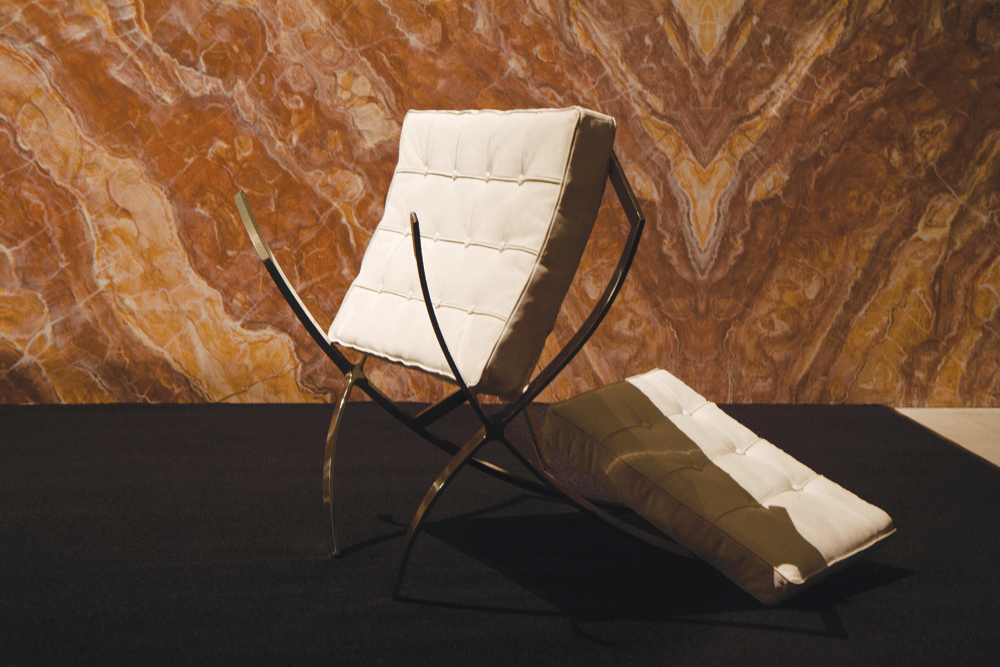Focus: Christian Andersson
Museological display, truth, fiction and ‘Lucy in the Sky with Diamonds’
Museological display, truth, fiction and ‘Lucy in the Sky with Diamonds’

Three and a half million years ago in what is now Ethiopia, Australopithecus afarensis came down from the trees to forage for food, placing themselves squarely within the human family. In 1974, anthropologist Donald Johanson and his student Tom Gray discovered the partial skeleton of one of the first hominids, and named her Lucy after The Beatles’ song ‘Lucy in the Sky with Diamonds’ (1967). ‘From Lucy With Love’, Christian Andersson’s largest solo show to date, at the Moderna Museet in Malmö earlier this year, framed Lucy as the centrepiece of a historically ambiguous museological display straddling truth and fiction. Other references included Edward Bellamy’s visionary novel, Looking Backward 2000–1887 (1888), which tells the story of Julian West, who falls into a hypnotic sleep in the late 19th century and awakens 113 years later in a socially Utopian United States, and Ludwig Mies van der Rohe’s Barcelona Pavilion, a watershed of modern architecture, which survived but a year after its construction in 1929 and was justly rebuilt in 1986. What’s the connection? That’s not apparent, but try this: like Julian West, Mies’ pavilion was ‘put to sleep’ only to wake up in the body of its own reconstruction, eyes wide open to the future it envisioned.
Among other artefacts, ‘From Lucy With Love’ presented a reproduction of Lucy’s skull (Looking Backwards, 2007), a copy of Bellamy’s futuristic novel on a bookstand encased in a glass vitrine and homages to the Barcelona Pavilion. Trying to tease out stories from these objects – as you do with artefacts in a museum – Andersson casts you as an archeologist of both future and past (or with ‘Lucy in the Sky with Diamonds’ in mind, you might wonder if this is just one more bad acid flashback), struggling to separate low signal from high noise. And here we arrive at the heart of his practice: while museum displays are conventionally framed as accounts of the truthful progression of history, once inside Andersson’s installation, your experience of historical fact becomes largely incoherent, though not inconsequential. Surely a work like To R.M. for EVER (2011), a polystyrene sculpture modelled after the stone assembly reading ‘rêve’ (dream) in René Magritte’s painting The Art of Conversation (1950), tells us Surrealism – rather than realism – is his touchstone.
Andersson freely exploited museum tropes to make ‘From Lucy with Love’ appear authoritative. Take, for instance, Paper Clip (The Baghdad Batteries) (2009), a demonstration fit for a science museum, in which he wired dozens of aged terracotta pots to a single iron rod. The configuration served to ‘prove’ a theory developed in 1940 by Wilhelm König, the Director of the National Museum of Iraq, who hypothesized that ancient vessels he discovered in the museum’s collection were actually early electrochemical cells. Were König correct, and many have believed he was, the Baghdad batteries would predate Alessandro Volta’s first ‘battery’ by more than a millennium. In Andersson’s replica, a single paper clip appeared to cling to the metal rod through a positive electrical charge.

But then, within each of these museological tropes, eccentricities began to seep in. Are we not drawn onward, we few, drawn onward to a new era (2009) is a large-scale photographic installation reminiscent of the bookmatched marble walls of the Barcelona Pavilion, into which Andersson fused patterns from Rorschach tests, thereby combining two of Modernism’s defining themes – architecture and psychiatry. In Härdens Ängel (Angel of the Hearth, 2011), Mies’ Barcelona Chair, posed against reproductions of the Pavilion’s tinos verde antico marble walls, was left disassembled, looking more like Postmodern sculpture than modern chair. Set against these larger objects a jewel of art historical veritas leapt out: a small photograph of the 1986 installation of Georg Kolbe’s sculpture Alba in the Pavilion’s small water basin (Untitled [Endloser Morgen], (Endless tomorrow), 2010). But Andersson actually re-photographed the image in its original cracked glass frame, and then reframed it beneath undamaged glass. In the centre of the room, a long vitrine encased what appeared to be the kind of evidence required for truth telling in a museum, but, inexplicably, the lighting that ran along the top of the vitrine stopped short of the section containing the reproduction of Lucy’s skull. Here, a black swing-arm desk lamp provisionally illuminated what must be considered the centrepiece of the exhibition. Doubt creeps in: you can’t help but wonder if the clinging paper clip actually substantiates König’s theory or if it’s Andersson’s brand of melodrama, performed right before your very eyes.
Andersson graduated from Malmö Art Academy in 2001, influenced by the likes of Douglas Crimp’s On the Museum’s Ruins (1980), the work of Sherrie Levine, Louise Lawler and Barbara Bloom, and the gutting of ‘Postmodern authenticity’ that emerged in the wake of the Pictures Generation. While he has obviously inherited pieces of these alternate histories the crucial question is, does he see those parallel accounts as the progress of truth? Scarcely. Rather than the programmatic critique of an earlier generation, Andersson leaves the door wide open to the unprompted, impulsive and extemporaneous as legitimate paths towards the limbo he’s conjured out of truth’s fictions.
Christian Andersson lives and works in Malmö, Sweden. His solo exhibition ‘From Lucy with Love’ was at the Moderna Museet Malmö from January until April 2011. His monolithic homage to René Magritte, To R.M. For EVER (2011), will be presented in June at Art Unlimited, Art Basel, Switzerland.
























